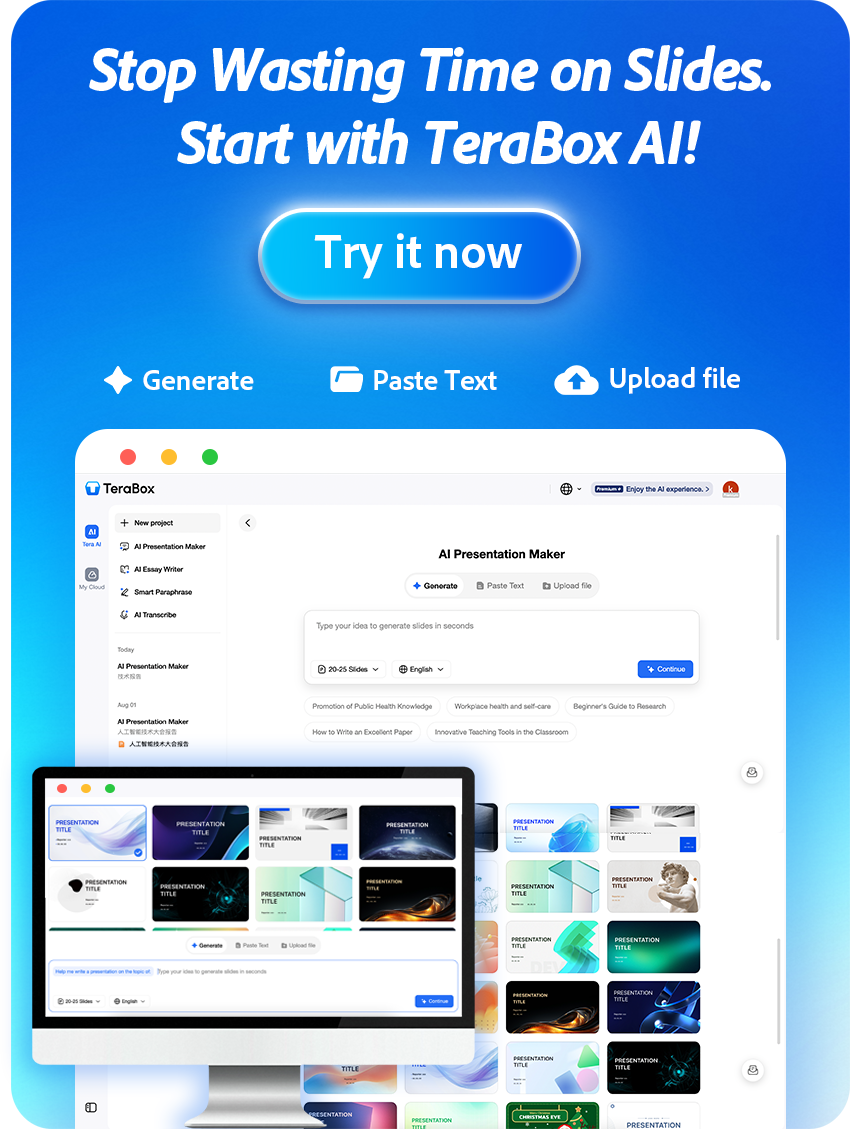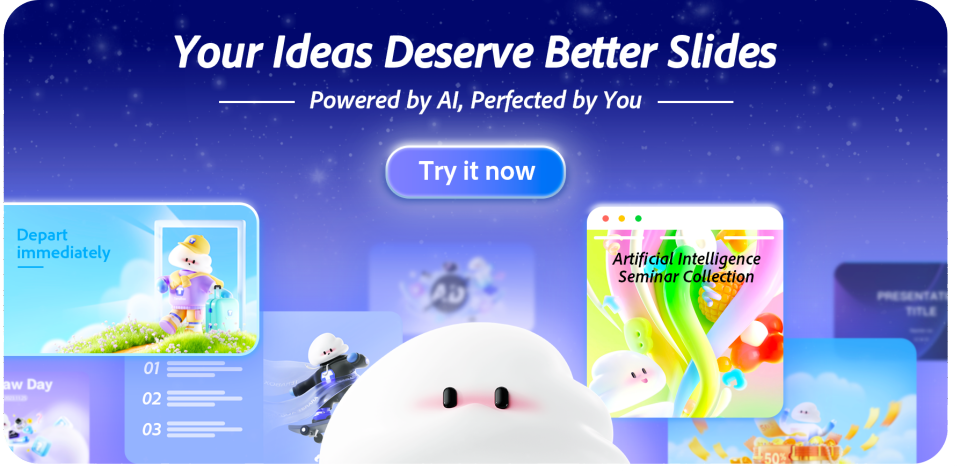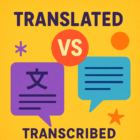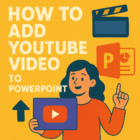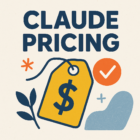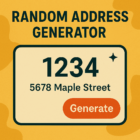Teams today face content overload across platforms — scattered docs, marketing assets, and product notes make it hard to find the right information when it’s needed. AI content grouping offers a scalable solution that automatically organizes content so marketing, documentation, and knowledge management teams stay aligned and productive. Imagine a marketing team finding every campaign asset in one search instead of hunting across drives — that time saved fuels creative work, not repetitive sorting. Try a free grouping demo to measure search time and duplication reduction for your team.
Today, teams juggle content across CMSs, cloud drives, chat apps, and wikis — creating overload that slows decisions and wastes time. AI content grouping is a scalable solution that automatically clusters related content so people in marketing, documentation, and knowledge management can find and reuse information faster. By intelligently aggregating text, images, and assets, AI streamlines processes and reduces friction across the content lifecycle, helping teams stay aligned on strategy and speed up content creation.
This article covers what AI content grouping is, how it transforms workflows, the key features to look for in tools, a concise implementation roadmap, collaboration benefits, common pitfalls, and FAQs to help your organization evaluate and adopt the right approach.
(Click to view a short demo of AI grouping in action — shows automatic clustering of campaign assets and a sample dashboard.)
What Is AI Content Grouping and Why It Matters
AI content grouping is an automated method that clusters related assets—documents, images, articles, and media—using natural language processing (NLP) and semantic analysis. Rather than relying on manual tags or static folders, these algorithms analyze text, metadata, and usage signals to reveal topic relationships, tone similarities, and intent-based clusters that make content discovery and reuse intuitive.
Why it matters:
- Better visibility: Clustering surfaces related content across projects so teams see the full context behind a topic or campaign.
- Smarter organization: It goes beyond simple content-based labels to group by intent (e.g., how-to vs. product overview) and tone (technical vs. promotional), improving workflow relevance.
- Faster workflows: By reducing search time and manual sorting, teams can spend more time on strategy and content creation.
Examples: marketing assets clustered by campaign and buyer intent; product docs grouped by audience and version; blog articles organized by topic cluster and SEO opportunity.

How AI Grouping Transforms Team Workflows
AI grouping changes how organizations manage information by creating searchable, centralized knowledge hubs from dispersed files and content sources. These hubs reduce friction across teams so people spend less time hunting for resources and more time on strategy and content creation.
1)Centralized knowledge hubs from scattered files
Centralized knowledge hubs aggregate documents, images, and articles from CMSs, cloud drives, and wikis into topic-based clusters. Example KPI to track: average search time — teams that pilot grouping often report measurable drops in time-to-find. For instance, a pilot across marketing and product docs can surface all launch assets in one place, shaving days off time-to-publish and improving cross-team coordination.
2)Reduced duplication of content across departments
Clustering surfaces similar or overlapping items so organizations can detect and remove redundant content. Recommended process step: run a duplicate-detection pass on newly formed clusters, flag items with high semantic similarity, and assign an owner to consolidate or retire duplicates. Metrics to monitor: number of duplicates removed and percent reuse of existing content.
3)Smarter task assignments based on grouped insights
Grouped insights map topics and workloads to people — enabling smarter task assignment and clearer ownership. For example, clusters can show which topic areas lack resources or which authors frequently contribute to a topic; managers can then assign tasks to the right users. Useful metrics: task assignment accuracy (tasks routed to most relevant owner) and reduced rework rate.
Mini-case: A product launch scenario — marketing, product, and documentation teams use AI clustering to align on messaging. The cluster dashboard shows all campaign briefs, creative assets, and help articles in one topic node; coordination time falls, duplicate drafts disappear, and the launch ships faster.
Bottom line: AI-driven clustering replaces repetitive sorting with structured visibility, freeing creative teams to focus on content creation and strategic initiatives while managers track topic-level progress and resource allocation.
Key Features to Look for in AI Content Grouping Tools
When evaluating AI content grouping tools, focus on capabilities that directly impact accuracy, scalability, and how well the tool fits your existing content operations. The right feature set helps organizations reduce manual work, improve content reuse, and speed up content creation and optimization across teams.
1)Automatic taxonomy generation
Look for tools that generate an automatic taxonomy using NLP and clustering algorithms rather than relying solely on manual tags. Good taxonomy generation groups topics, intents, and related keywords into logical categories so your content becomes easier to search and repurpose. Evaluation checklist: taxonomy precision (sample clusters), ability to edit mappings, exportability for audits, and support for multilingual text.
2)Cross-project linking
Cross-project linking connects related content across campaigns, product docs, and knowledge bases, surfacing topic-level relationships that traditional folders miss. This capability enables topic clusters to show dependencies and reuse opportunities across projects. Test for: how the tool surfaces links, whether it suggests related assets automatically, and if it supports backlinks or references for editorial workflows.
3)Collaborative tagging and editing
Collaborative tagging and inline editing let teams refine AI groupings and apply human judgment where needed. Choose tools with role-based permissions, easy collaborative tag editing, and change history so teams can iterate on categories without losing context. Practical checks: real-time collaboration, conflict resolution, and audit logs for tags/edits.
4)Integration with CMS or marketing platforms
Seamless integration with your CMS, DAM, or marketing platforms ensures grouped content flows into existing pipelines. Verify connectors or APIs for platforms you use (e.g., CMSs, cloud storage, analytics), ability to sync metadata, and how grouped topics map back into your publishing or campaign tools. Integration depth matters for scale and long-term adoption.
Procurement checklist — quick scorecard: accuracy (sample cluster tests), scalability (ability to process N documents per day), integration depth (APIs/connectors), governance (user roles, export for audits), and privacy/compliance features.
AI-powered tools vs. traditional approaches: AI-driven clustering reveals semantic relationships and intent-based topics that manual taxonomies often miss, while traditional tools rely on static tags and folders. For a safe evaluation, run a demo on a small dataset and compare how many relevant clusters the AI produces versus your current structure — that will reveal optimization opportunities.
Call to action: pilot with a representative dataset (one campaign or one documentation product), review taxonomy accuracy with stakeholders, and measure time-to-find, duplicate reduction, and reuse rates before scaling.

How to Implement AI Content Grouping in Your Workflow
To implement AI content grouping effectively, follow a concise, practical roadmap that turns scattered material into usable topic clusters. The goal is to move from a manual, fragmented content process to an auditable, scalable clustering workflow that surfaces relevant assets and supports content strategy and creation.
1)Audit your existing content ecosystem
Start with a content ecosystem audit that catalogs content types, owners, last-updated dates, formats (text, images, video), and primary use cases. Quick checklist items: total items by source, top contributors, content age distribution, and obvious silos. Expected outputs: inventory CSV, content health score, and a prioritized list of folders/collections to include in the pilot. Time estimate: 1–2 weeks for a medium-sized repository.
2)Upload or sync data from CMS/cloud storage
Consolidate content by syncing data from your CMS, DAM, cloud drives, and knowledge bases into the grouping tool using available connectors or APIs. Verify supported file formats and metadata fields before syncing. Output: a centralized index ready for analysis; time estimate: a few hours to several days depending on volume. Tip: sync a representative subset (one product or campaign) for the pilot to reduce noise.
3)Run initial AI grouping and review clusters
Run an initial clustering pass using the tool’s NLP and semantic algorithms. After the AI produces clusters, run a structured review: sample cluster precision (are items topically related?), false positives rate, and coverage (percent of content clustered). Acceptance criteria example: ≥70% cluster precision on pilot dataset. Outputs: labeled clusters, a list of questionable items, and suggested merges/splits. Time estimate: initial run + review = 1–2 weeks for a pilot.
4)Customize categories and define collaboration rules
Refine the auto-generated taxonomy to match your organization’s structure—rename categories, merge similar clusters, and create topic tags that align with strategy. Define governance: who owns each cluster, edit permissions, and a change workflow for taxonomy updates. Output: a customized category map and collaboration rules doc. Governance suggestion: assign cluster owners and a taxonomy steward.
5)Train teams to interpret and update clusters regularly
Operationalize cluster maintenance with a training plan: initial workshops for content creators, editors, and managers; a review cadence (weekly for the first month, then monthly), and a lightweight playbook for handling misclassified items. Outputs: trained users, playbook, and an ongoing review calendar. This hybrid human–AI workflow keeps clustering accurate as content scales.
Hybrid roles and responsibilities (example): taxonomy steward (oversight), content owners (approve cluster changes), analysts (monitor metrics), and contributors (tag and flag issues). Suggested pilot KPIs to measure before scaling: average time-to-find, duplicate content count, reuse rate, and cluster precision.
| Step | Description | Expected Output | Time Estimate |
|---|---|---|---|
| Content Ecosystem Audit | Assess and identify gaps and areas for improvement. | Inventory CSV, content health score, pilot scope | 1–2 weeks |
| Sync Data | Consolidate content from various platforms into one hub. | Centralized index, sample dataset | Hours–days |
| Run AI Grouping | Utilize AI to cluster related content for better insight. | Clusters, review notes, precision metrics | Days–1 week |
| Customize Rules | Define clear guidelines for collaboration among team members. | Category map, governance doc, cluster owners | 1 week |
Final tip: pilot with a single campaign or documentation product, measure baseline KPIs, iterate on taxonomy accuracy, and only then scale integrations and automation across the organization. This structure helps ensure your ai-powered tools deliver scalable, measurable improvements in content management and clustering as you grow.

Maximizing Collaboration Through AI Content Insights
Grouped content creates a shared source of truth that improves visibility across teams — turning scattered files into actionable insights. AI-driven content clusters let writers, designers, marketers, and managers work from the same set of topics and signals, accelerating creation and reducing friction between contributors.
1)Writers and designers coordinate around shared topics
When writers and designers pull from the same topic clusters, they can produce multi-format campaigns that remain consistent in message and tone. Micro-example: a writer uses a topic cluster to draft a blog and a designer pulls the same cluster for social creatives, ensuring visual and copy alignment. Suggested KPI: reduce time-to-publish by tracking average time from brief to final asset.
2)Marketers identify content gaps and reuse opportunities
AI insights surface content gaps (topics with high search intent but low content coverage) and highlight reuse opportunities within clusters. Marketers can prioritize content creation where the gap is largest or repurpose existing articles and images for new channels. Suggested KPIs: content reuse rate and number of content gap opportunities closed per quarter.
3)Managers track campaign coherence using AI dashboards
Managers get a topic-level view via dashboards that show which clusters are well-covered, which channels are under-resourced, and campaign coherence across formats. Practical routine: run a weekly editorial sync using the cluster dashboard and a monthly cross-team review to adjust priorities. Suggested KPI: campaign coherence score (percent of assets aligned to the core messaging cluster).
How this maximizes creativity: by automating the repetitive work of locating assets and mapping topics, AI grouping frees human teams to focus on strategy and high-value content creation. Teams should measure collaboration gains with simple metrics (time saved, reuse rate, stakeholder satisfaction) and iterate on cluster definitions as needs evolve.

Common Pitfalls and How to Avoid Them
AI content grouping can boost productivity, but organizations often stumble on the same predictable mistakes. Spotting those symptoms early and applying simple remedies keeps your process reliable and aligned with business goals.
1)Treating AI clusters as “final” without human review
Don’t assume AI output is perfect. Human review is essential to catch nuance, brand voice issues, and misclassifications.
- Quick human-review checklist: sample 10–20 items per cluster, confirm topical relevance, check for sensitive or outdated content, and flag edge cases.
- Symptom: frequent user complaints like “this file doesn’t belong here.”
- Remedy: pilot weekly reviews for one month, then move to monthly audits once precision stabilizes.
2)Ignoring context or intent behind grouped topics
Clusters can group similar language that serves different intents (how‑to vs. promotional). Ignoring intent leads to misaligned content strategy.
- Reviewer prompts: Who is the audience? What is the primary intent (inform, convert, support)? Is tone appropriate?
- Symptom: high bounce or low engagement on content that was “clustered” as relevant.
- Remedy: label clusters with intent and audience metadata, then use those labels in content planning and task assignment.
3)Failing to align AI outputs with business goals
AI clusters should map back to measurable outcomes. If clusters don’t support goals, they add noise instead of value.
- Alignment template: map each top-level cluster to one business goal (e.g., lead gen, support deflection, product education) and define 1–2 KPIs.
- Symptom: clusters exist but no one uses them in campaigns or docs updates.
- Remedy: assign cluster owners and require a short plan for how each cluster will be used (reuse, retire, update).
4)Practical remedies: hybrid workflows, cadence, and refresher learning
Use a hybrid human–AI workflow: AI proposes clusters, humans validate and govern. Recommended cadence: pilot weekly reviews for the first month, then monthly governance cycles. Refresh models or training data quarterly (or when you see drift) to keep clustering accurate.
- Roles & responsibilities: taxonomy steward (owns taxonomy), cluster owners (approve changes), content creators (flag issues), analysts (monitor metrics).
- Quick detection checklist: watch for rising misclassification rates, repeated user search failures, sudden drops in reuse, or an increase in duplicate items.
- Call to action: assign cluster owners this week and schedule the first 30‑day review — ownership prevents drift and improves trust.
Keeping human review, clear intent labels, business alignment, and a regular review process will prevent most pitfalls and ensure your content grouping investments deliver measurable time savings and better use of organizational resources.
Conclusion
AI content grouping isn’t just smarter file sorting — it unlocks teamwork efficiency and creative insight by turning scattered content into usable topic clusters. When organizations apply these techniques, teams spend less time on repetitive searches and more time on strategy and content creation, producing measurable productivity gains.
Quick experiment to try: run a 30‑day pilot with a free grouping tool on one team or campaign. Measure baseline KPIs (average time-to-find, duplicate content count, and content reuse rate), apply AI grouping, then compare results after the pilot. That simple test will show tangible benefits and the ROI of scaling.
Recommended next steps for 2025: test a free grouping tool, validate taxonomy accuracy with stakeholders, and plan to scale up with premium features (deeper integrations and automation) once you’ve confirmed improvements in collaboration metrics and content performance. A staged rollout — pilot, measure, iterate, scale — keeps risk low and impact high.
By focusing on measurable outcomes (time saved, fewer duplicates, higher reuse) and combining AI with human review and governance, organizations can make content work harder for strategy and growth. Try a free grouping tool for 30 days, track the metrics above, and use those results to build a scalable content grouping strategy in 2025.
FAQ
How does AI content grouping differ from traditional tagging?
AI grouping uses algorithms (NLP and semantic clustering) to automatically surface relationships, intent, and tone across your content, while traditional tagging relies on manual labels that are inconsistent and hard to scale. Summary: AI reveals topic and intent connections; tagging is static and manual.
What industries benefit most from AI grouping?
High-content industries — media, e-commerce, healthcare, education, and marketing organizations — get the biggest gains because they manage large volumes of diverse content. Use cases include content reuse, knowledge management, documentation versioning, and campaign orchestration.
Are there free AI content grouping tools for small teams?
Yes — several free or freemium tools provide basic grouping and clustering features suitable for pilots. Recommendation: run a 30‑day pilot on one campaign or product docs to test accuracy and measure time saved before upgrading to paid tools.
Can grouped content improve SEO performance?
Grouped content can boost search optimization by creating clearer topic clusters, improving internal linking, and helping users find relevant articles faster — which can increase engagement and reduce bounce rate. Practical tip: map grouped topics to SEO keywords and internal linking opportunities.
How often should you update your AI grouping model?
Recommended cadence: pilot weekly reviews for the first 30 days, then move to monthly governance cycles. Refresh training data or retrain models quarterly or whenever you detect concept drift (rising misclassification or content changes). Track time-to-find, cluster precision, and reuse rate as indicators.
